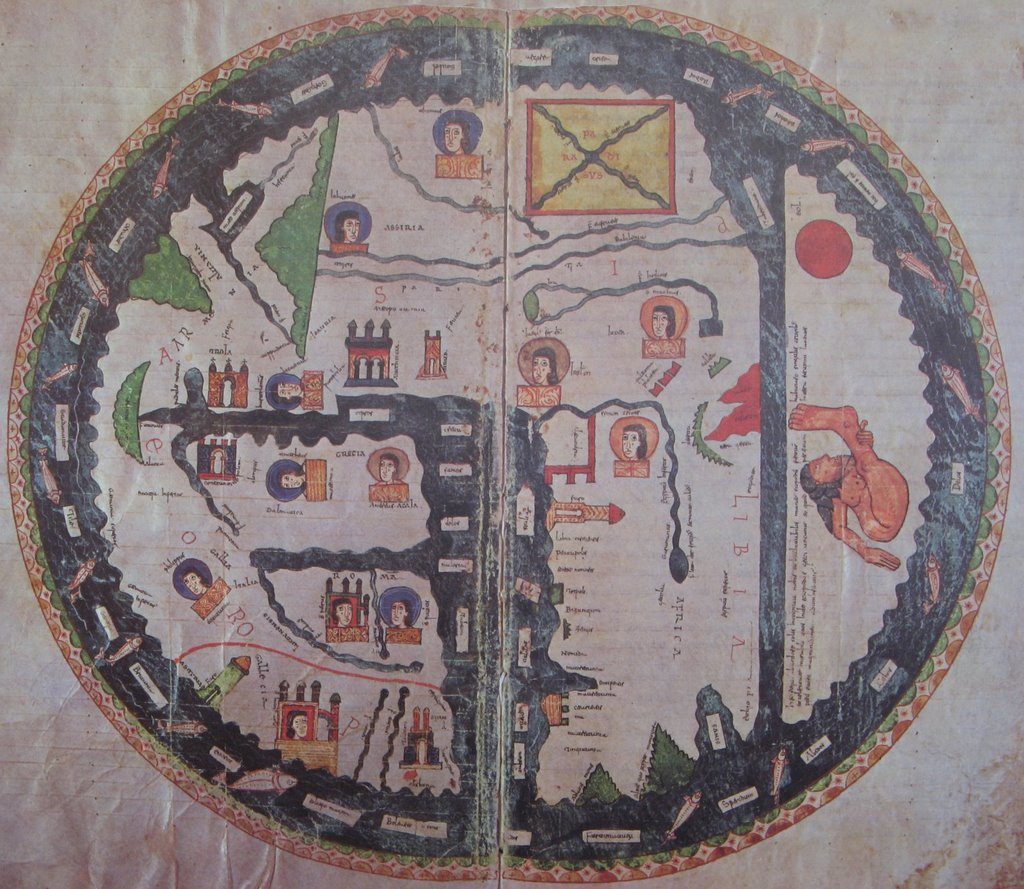
The monopod, or skiapod, shades himself with his giant foot. This woodcut is from the Nuremberg Chronicle, via Wikimedia Commons.
People with missing limbs, enlarged extremities, or dwarfism were often stars of 19th- and early 20th-century sideshows. Had the monopod, or skiapod, been around, it would have ruled the stage.
These mythological beings had only a single leg and a single giant foot supporting their diminutive bodies. Hence their names, meaning “one-foot” or “shadow-foot.”
The earliest mention comes from Aristophanes’ play, The Birds, performed in 414 BC: “Near by the land of the Sciapodes there is a marsh, from the borders whereof the odious Socrates evokes the souls of men.”
Other ancient writings from Pliny the Elder and Apollonius of Tyana suggest they lived in India and Ethiopia—both very hot places to call home. Fortunately, they had built-in shades. They’d lay on their backs and block the sun with their big feet, like a natural umbrella that wouldn’t break on a windy day.

A monopod is seen on the Osma Burgo de Beatus map, by Beato de Liebana, via Wikimedia Commons.
The monopod later shows up in 1086 on the Burgo de Osma Beatus map (above), in 1493 on the Nuremberg Chronicle map (along with many other curious creatures), and in Sebastian Münster’s description of the world, Cosmographia, published in 1544 (also with other curious creatures, as seen below).
More recently, they’re portrayed hopping around in C.S. Lewis’ The Voyage of the Dawn Treader from the Chronicles of Narnia series.
It’s been theorized that the monopod isn’t completely made up, but is in fact a distortion of tales from those who had witnessed Indian yogis standing on one foot for long periods of time. If so, it would appear that as the monopod myth grew, so did its foot.

An engraving showing (from left to right) a monopod or sciapod, a female cyclops, conjoined twins, a blemmye, and a cynocephaly. From Sebastian Münster’s Cosmographia (1544). Via Wikimedia Commons.






